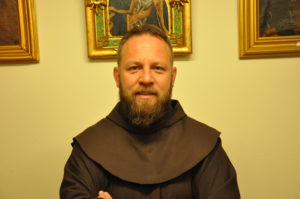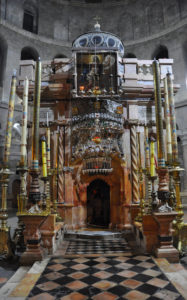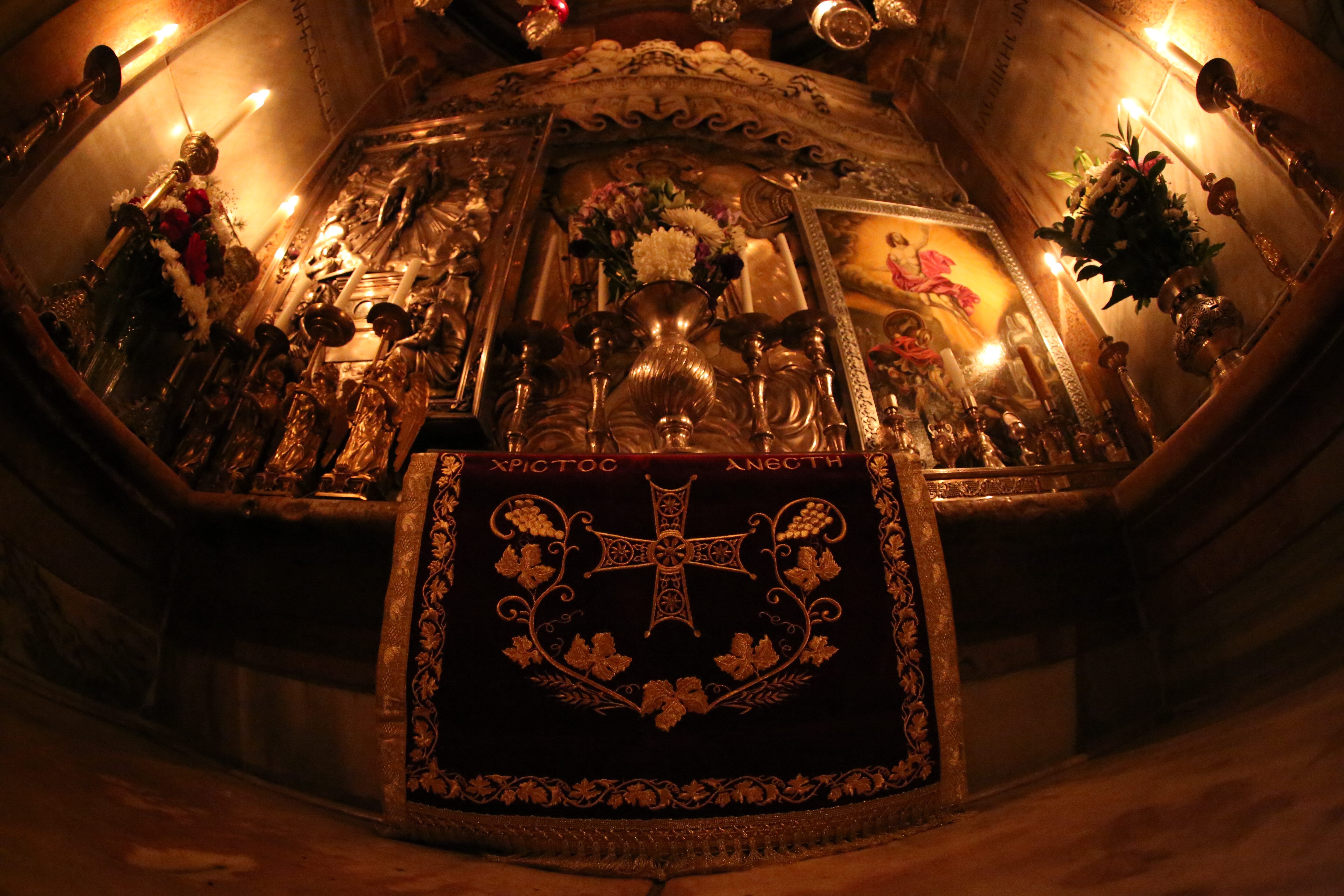Fr. Zacheusz Drazek, OFM is President of the Franciscan fraternity of the Holy Sepulchre.
 What was the timeline of this restoration?
What was the timeline of this restoration?
It started in May 2016 and ended in March 2017. This deadline had to be respected: celebrating Easter without the Edicule was unthinkable. In 2015, this decision was already being discussed, as the Edicule had been considerably weakened since the 1927 earthquake. Metal bars had been installed to support the walls. But we noticed over time that the façade was collapsing, which was becoming dangerous for the pilgrims walking under the marble stones at the entrance. So the walls were filled in and reinforced, especially the stones that were left hollow since the metal bars were not there anymore. The stones were worked on upstairs, in the gallery. It was very detailed engineering work: everything was redone without touching the original structure. The appearance has hardly changed.
The big discovery was that of ancient grey marble, estimated to date from the Constantinian times or the Crusades. Just underneath, split in half in the length, we found the burial stone of Christ.
We had lost trace of the tomb until then?
Many testimonies from the Antiquity attest to the presence of the original stone, but we had never seen it. The tomb hadn’t been opened once in the past 500 years! In 1810, a fire caused a lot of damage to the Edicule built by the Franciscans in 1555, the last time the tomb had been opened. The Greeks then built the current one, without touching the tomb. Afterwards nothing was touched.
How was your cooperation with the other owner communities?
 The communities involved were the Greeks, the Latins and the Armenians. The first difficulty was to come to an agreement: who was to decide? Who was then to carry out the renovations? That was decided quickly: even though the place was shared property, the structure of the Edicule and its inscriptions are Greek, so the renovation work fell to them, to a team of engineers from the University of Athens, under the direction of Professor Antonia Moropoulou.
The communities involved were the Greeks, the Latins and the Armenians. The first difficulty was to come to an agreement: who was to decide? Who was then to carry out the renovations? That was decided quickly: even though the place was shared property, the structure of the Edicule and its inscriptions are Greek, so the renovation work fell to them, to a team of engineers from the University of Athens, under the direction of Professor Antonia Moropoulou.
Every week however, the leaders of the communities met together, even though the Greeks had the last word. The Armenian and Latin engineers were still in a position to influence the decisions made by the Greeks, and that was the most important for us.
Did the Edicule remain accessible to pilgrims?
Yes, it always remained open. The renovation work was carried out at night, or up in the galleries. The pilgrims could still enter. However, it was closed once for 60 hours, which was historic, when the marble was opened to uncover the original stone on which Jesus’ body had lain. This was on the 26th, 27th and 28th of October 2016. I remember very well. We took turns every two hours. It was a moment of great grace. It was amusing to see that all the electronic instruments that were used for the renovations stopped working in that moment. And started again afterwards!
What did these renovations change in the history of the Holy Sepulcher and in your lives?
I am now sure that this is the place of the Resurrection. Before seeing this, I wasn’t 100 % certain yet that this was the place. One of the biggest changes was also the opening, in the Edicule, of a window that allows one to see the original rock. The opening of the tomb was a moving moment for all, it was a surprise: Antonia Moropoulou didn’t think that the burial stone would be so close to the slab. We had moved the current slab in order to strengthen the foundations of the Edicule, and not in search of any archaeological remains.
